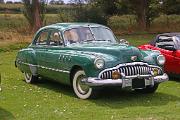
Buick Roadmaster 1949 4-door sedan front
Buick Roadmaster 1949 4-door sedan. The Model 71 4-door sedan was built on 126-inches, and powered by a 5,247cc (320) Fireball 8 engine.
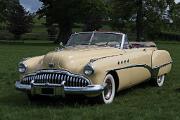
Buick Roadmaster Dynaflow 1949 Convertible front
Buick Roadmaster Dynaflow 1949 Convertible. The Roadmaster engine was the largest 5.2-litre straight-eight fireball engine giving 150bhp. The 'Dynaflow' referred to a Torque Converter transmission available on the RoadMaster and so popular that Buick had to double production. One-piece windscreens appeared in 1950, but the 'sweepspear' on the flanks was to be a continuing feature on the larger Buicks for years to come.
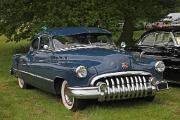
Buick Special 1950 Jetback 2-door front
Buick Special 1950 Jetback 2-door. The split windscreen indicates this to be a Special because the Super and Roadmaster had one-piece screens for 1950. Specials and Supers had 3 ventiports - flattened and placed on the bonnet sides.
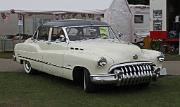
Buick Super 1950 Riviera Sedan front
Buick Super Riviera Sedan 1950. Ventiports were given to Buick for the first time in 1949, the larger models having 4 ports each side, whereas the Special and the Super only had 3 each side. Ventiports had a squashed format for 1950 and were fitted onto the bonnet sides, going rounded and onto the wings for 1951. The 4-door 'Riviera' sedan was a GM C-body on a 125.5-inch wheelbase and it was a good seller.
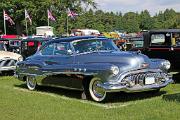
Buick Super 1951 Riviera Hardtop front
Buick Super 1951 Riviera Hardtop. Powered by a 4,065cc (263) Dynaflow 128 bhp inline eight cylinder engine. The 1951 Riviera hardtop sold 54,500, compared to 92,000 of the 4-door sedan.
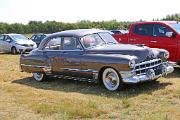
Cadillac Series 62 1949 4-door sedan front
Cadillac Series 62 1949 4-door sedan. Cadillac's first new model after World War Two, and for 1949 Cadillac had a new ohv 5,425cc (331) 160 bhp V8 engine. The Series 62 was built on a 126-inch wheelbase and measured 215-inches. The Fleetwood Special Sixty version was on 133 and measured 226
Image created by Simon GP Geoghegan (email: web@simoncars.co.uk)